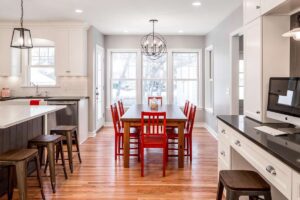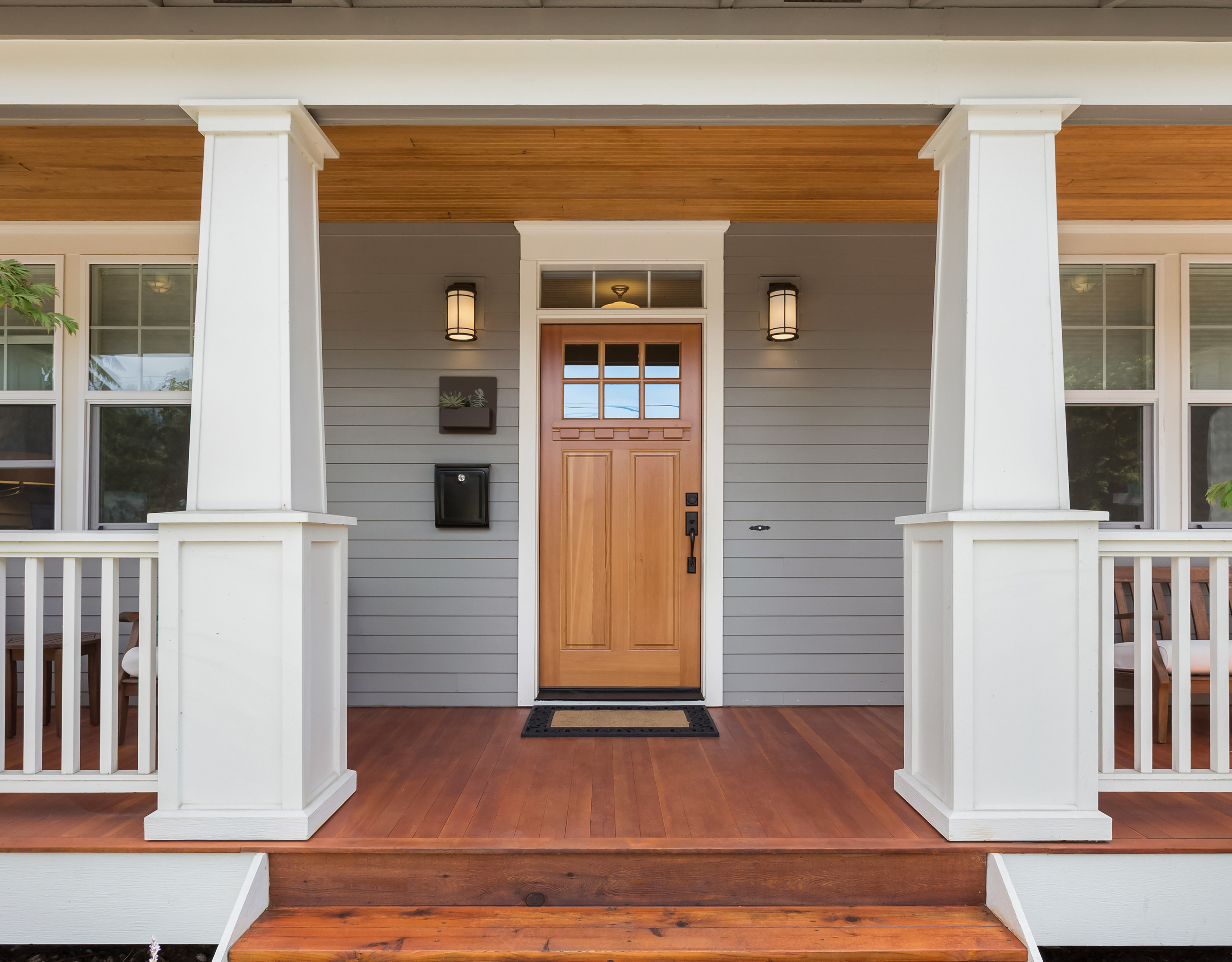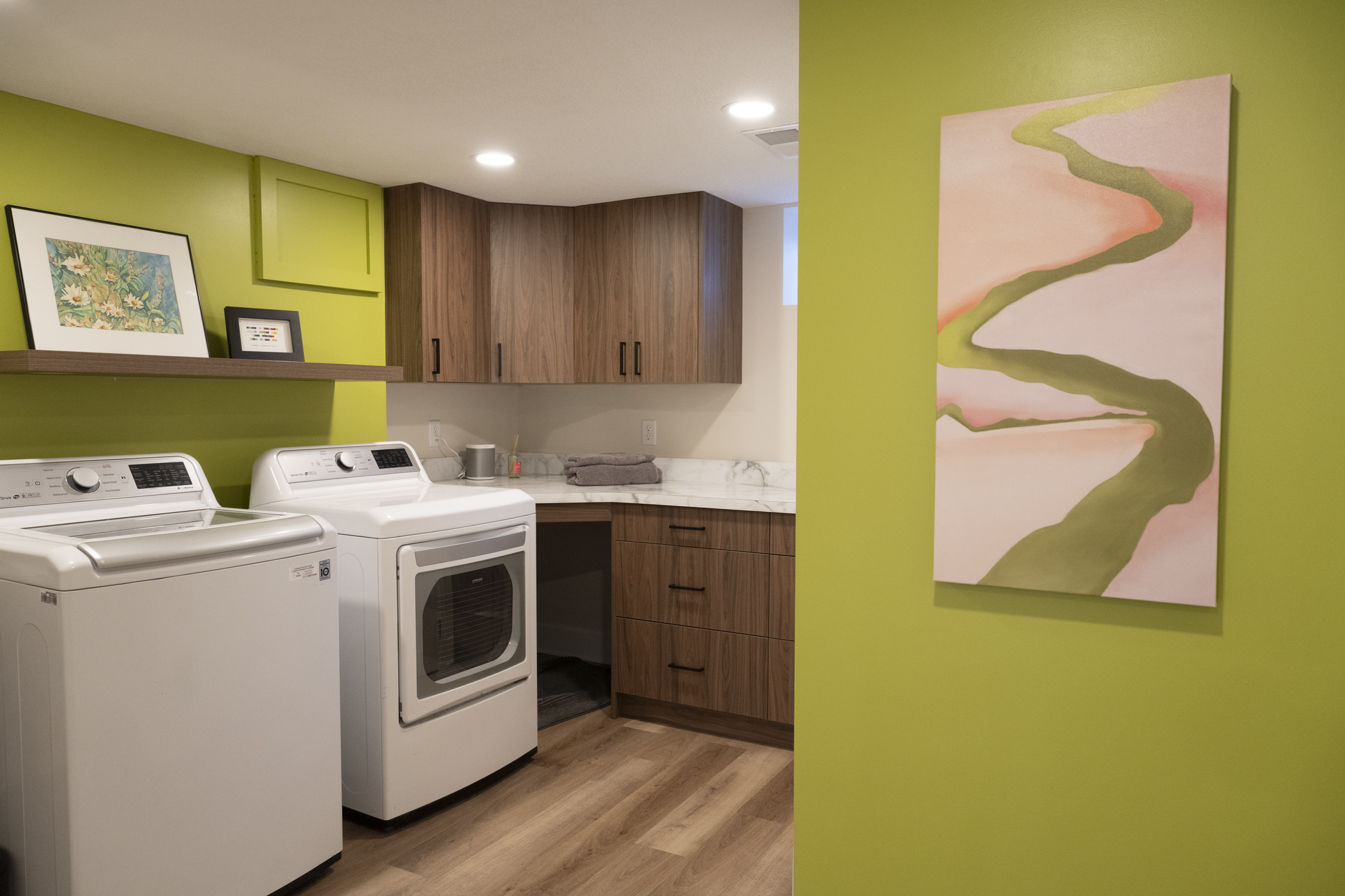Planning to renovate your entire home or add functionality to an outdated or underutilized space? Good news! You now have a unique opportunity to incorporate eco-friendly home improvements to help lower energy consumption and reduce carbon emissions.
Ready for even better news? It doesn’t have to be that complicated. By upgrading insulation, replacing older windows, or installing electric appliances, you can easily make a positive impact on your home and the planet without sacrificing comfort. Many of these updates can also save you money in the long run.
In this blog article, we’ll explore how to design an eco-friendly home remodel with a few essential considerations—and a little Bluestem creativity.
Eco-Friendly vs. Sustainability
Before we dive in, let’s first address a few important definitions. People often use the terms eco-friendly and sustainability interchangeably, but there are subtle differences between them:
Eco-friendly
This term generally refers to products, services, or practices with a reduced negative environmental impact. Simply put, they aim to minimize resource depletion, pollution, and waste while prioritizing conserving and protecting natural resources.
Sustainability
 Sustainability encompasses a broader perspective that considers the long-term impact of human activities on the environment. It seeks to create a balance between meeting current needs without compromising the ability of future generations to meet their own needs.
Sustainability encompasses a broader perspective that considers the long-term impact of human activities on the environment. It seeks to create a balance between meeting current needs without compromising the ability of future generations to meet their own needs.
Sustainability involves finding ways to use resources efficiently and reduce waste.
In addition to these definitions, let’s review a few more.
Embodied Carbon
This refers to the amount of carbon dioxide (CO2) emitted during the production and transportation of building materials and the construction process itself. It’s a critical factor in assessing the environmental impact of your building or renovation project.
Life-Cycle Carbon
Life-cycle carbon encompasses the carbon emissions associated with the operation and maintenance of the home over its lifespan, including:
- Energy use
- Water consumption
- Waste generation
Toxic Materials
Toxic materials present in a home can pose serious health risks to you and harm the environment when not disposed of properly. However, you can mitigate the risk of toxic materials in a remodeling project by working with a design team that assists you in choosing finishes and materials that are low in volatile organic compounds (VOCs) and other harmful chemicals.
Moreover, an experienced team can help you minimize the usage of certain materials to only areas that are necessary, which will help further reduce the risk of toxicity.
Green home
A green home is a dwelling that is designed, constructed, and operated to minimize its negative impact on the environment.
It incorporates eco-friendly and sustainable features that help do the following:
- Reduce energy consumption
- Conserve water
- Optimize resource use
- Promote healthier living environments
And one more important thing; today, as carbon emissions are pushing our climate towards a tipping point, it is more important than ever to reduce the carbon emissions it takes to do your remodel than to reduce the long term carbon savings. In other words, if you have to make a choice, watch the embodied carbon FIRST.
Tips for Creating an Eco-friendly Home
Did you know that remodeling your home is actually already eco-friendly? Instead of building a new one from scratch, you’re focusing on repurposing existing materials. And the more you can use what’s already available and avoid throwing things away, the better it is for the environment.
So, if you’re remodeling, you’re already on the right track! The next part is to find creative ways to work within the restrictions of existing homes to reduce carbon emissions – without sacrificing aesthetics, comfort, and affordability.
Here are a few ideas to consider:
Less Is More
When it comes to eco-friendly remodeling, less really is more. What is the most discrete remodel you can do that will meet your household’s needs? Can you get there without an addition? Can the addition be smaller? Are there pieces of your existing home that it makes sense to leave as is, or maybe just update with a simple coat of paint?
Choose Sustainable Materials
Repurposing old materials and minimizing the use of concrete, plastics, and other chemicals can also contribute to a more eco-friendly home.
Reduce concrete use
 In building a new home, concrete can contribute 30% of the embodied carbon. When remodeling, however, we have a unique opportunity to reduce the amount of concrete used in the project.
In building a new home, concrete can contribute 30% of the embodied carbon. When remodeling, however, we have a unique opportunity to reduce the amount of concrete used in the project.
Some of the ways we can achieve this are by not expanding the foundation, using alternative foundation materials (such as permanent wood foundations), using new alternative concrete products and only using concrete where absolutely necessary.
Limiting foam use
Using foam only where necessary, much like with concrete, reduces the overall use of materials and minimizes the environmental impact. Also, foam products vary significantly in embodied carbon.
Foam can be used strategically in specific applications, such as insulation below grade (or in the rim area of an older home), to improve energy efficiency and comfort. By avoiding the overuse of foam, you can conserve resources and promote sustainable building practices.
Reusing materials
Using existing materials like wood flooring can create beautiful and functional spaces. Sanding down and re-staining flooring will give it a fresh look without consuming new resources.
See how our team worked reused and salvaged materials into this contemporary St. Louis Park kitchen remodel!
Prioritize Energy Efficiency
If you are already making upgrades, or if your home is drafty, uncomfortable and expensive to heat, you have a great opportunity to improve your comfort and decrease your carbon footprint. Let’s go over a few easy ways to increase energy efficiency in your home.
Air Sealing
This involves closing gaps and leaks in your home’s envelope to prevent air from escaping or entering. This is the simplest strategy for saving energy.
Insulation
Installing insulation in your walls, attic, and floors can improve comfort and reduce energy use. It makes most sense to tackle if your remodeling project is opening things up.
Energy-efficient windows
If you’re renovating a room, or a home with outdated windows, consider installing new, energy-efficient ones that let in natural light while keeping your home well-insulated.
Electric appliances
Another effective way to prioritize energy efficiency is by transitioning to electric appliances and eliminating non-electric ones during renovations.
An “all electric” home can help limit carbon emissions as the electricity continues to be generated by more renewable sources.
Improve Air Quality
Considering air quality is essential for creating an eco-friendly home remodel.
Proper ventilation
Work with your design team to ensure adequate ventilation in your home that brings in fresh air and removes pollutants.
Choose low-VOC materials
 Opt for low-VOC emissions materials to help reduce indoor air pollution.
Opt for low-VOC emissions materials to help reduce indoor air pollution.
For example:
- Low- or no- VOC (volatile organic compounds) paint.
- Eliminate carpet or use natural fibers.
- Choose waterborne floor finishes or products, such as tile that doesn’t emit substances into the air.
Install an air purification system
Quality air purification systems can help remove harmful pollutants, allergens, and odors from the air.
Creating an Eco-Friendly Home with Bluestem
Are you dreaming of an eco-friendly home that’s both aesthetically pleasing and comfortable? Don’t worry. You won’t have to give up anything or compromise on your desired look.
At Bluestem Remodeling, we know how to make informed, creative recommendations that minimize environmental impact while meeting your needs. Our team of experts can help you select the right materials, incorporate energy-efficient features, and design a home that’s both functional and beautiful.
And the best part? You’ll be making a positive impact on the environment by reducing carbon emissions. Let us guide you through the process of building an eco-friendly home that’s perfect for you!
Contact us today to get started.
Want to learn more?
Get our Green Remodeling Tips e-guide!





